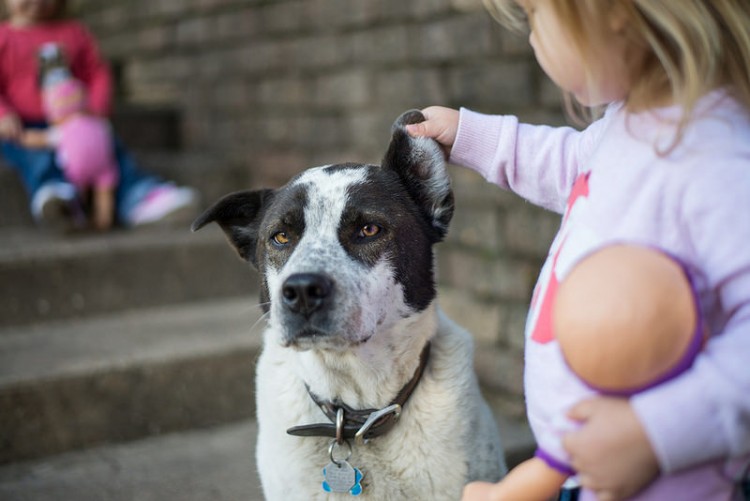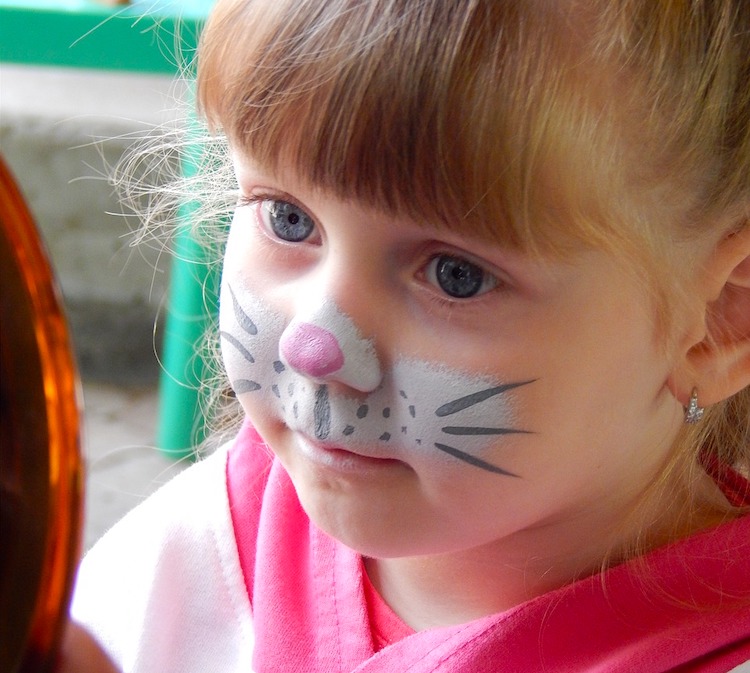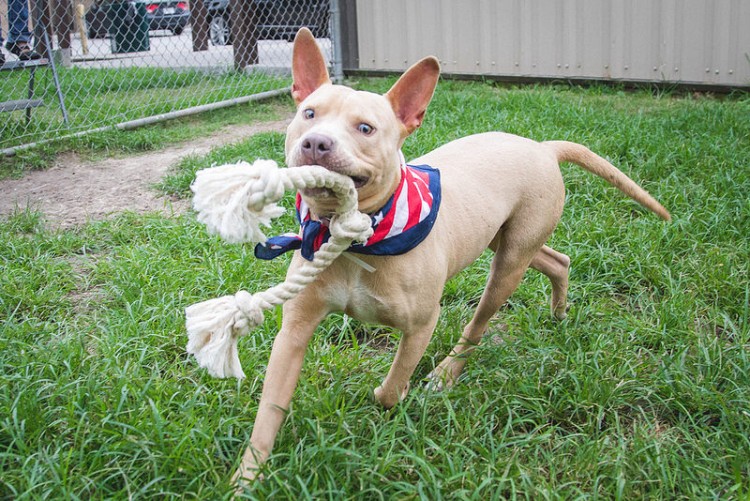
Most kids we’ve met want to hug and pet every fuzzy 4-legged critter they can wrap their arms around.
Children love animals. And that’s precisely why it’s a great idea to get kids involved with helping animal shelters when they’re young.
It’s not always simple to determine how children can get involved with animal shelters, though, especially for very young children. But kids of all ages can help — whether from home, in school or at the shelter itself.
In this expert guide to how kids can help animals in shelters, we’ll cover:
- Simple shelter volunteer tasks for kids — and what age groups are appropriate for each task
- How (and why) to throw your kid’s birthday party at an animal shelter
- How kids can spread the word among their peers
- And many other ideas for getting children involved in helping animal shelters — including an awesome reading program that we absolutely love!
So, let’s dive right in…
Part 1: Why Kids Should Get Involved With Animal Shelters
Animal shelters depend entirely on donations and community support. Operating a shelter is an act of love that demands an enormous amount of dedication, time and energy.
It’s important to show kids the need for responsible pet care and the benefits of animal shelters.
Through their involvement with the shelters, children gain the rewards and feelings of accomplishment that come with aiding animals.
Age-Appropriate Involvement
Not all children are capable of or should be allowed to perform some of the tasks that shelter volunteers manage.
But almost every age group can find some way to help out.
High school teens (16–18 years old) can:
- Walk and socialize dogs
- Feed and clean up after the pets
- Clean the shelter or provide landscaping services
Kids in junior high (13–15 years old) can:
- Groom docile pets
- Prepare meals
- Distribute toys
Children 12 and younger can help with their parents to:
- Socialize kittens and puppies
- Hand out treats
Keep in mind that most shelters have age restrictions for their volunteers and may require a parent or guardian to be present with volunteers younger than 18. Some shelters don’t allow very young volunteers, or they may have certain days specifically allotted for them.
For instance, Austin Pets Alive! in Texas works with another organization to host volunteers younger than 12 each month.
Check with your shelter to see what needs it has and what its volunteer policy is.

Part 2: How Kids Can Help Animals in Shelters
The past few years have seen a rising trend of parents teaching their children the value of volunteering.
Was YOUR Pet Food Recalled?
Check Now: Blue Buffalo • Science Diet • Purina • Wellness • 4health • Canine Carry Outs • Friskies • Taste of the Wild • See 200+ more brands…

Schools are starting to follow suit. Many high schools across the country require students to complete a certain number of volunteer hours before they can graduate.
Here are a few ways children can help shelter animals:
Easy Projects at the Shelter
Because of insurance concerns, some shelters and rescues do not allow children younger than 16 to work with the animals directly. But kids can still help out in other ways.
Most rescues can use help with minor clerical tasks, such as:
- Stuffing envelopes
- Volunteering at charity events
- “Helping” you transport supplies or rescued animals from one location to another
Pet Supply Drive
Not all involvement with animal shelters has to be done on-site. It’s actually possible to get children involved, raise awareness and benefit shelters from the comfort of your home or elsewhere in the community.
Raising awareness about local shelters and the many benefits of adopting a pet instead of buying one is a great challenge that can be taken on by kids eager to help.
For starters, your child — with a little help from you — can organize a pet supply drive at school or church.
Participants can bring in pet food, treats, collars, leashes, toys, blankets and beds. Even old newspapers and used linens may be valuable to the shelter, so ask the shelter staff about their current needs.
You and your child can drop off the supplies at your local animal rescue or shelter. Children get excited when they deliver the much-needed supplies for the dogs and cats — and this practice teaches them a lifelong lesson in kindness.

Donation Canisters for Local Shops
Animal shelters operate on a very lean budget. The estimated cost of housing an animal at a shelter ranges from $3 to $25 a day.
Just a few dollars can feed a homeless animal for an entire week.
Help your child reach out to local stores and restaurants to see if they would keep a donation canister at their register. The loose change that customers drop in can add up quickly.
You could also ask your veterinarian if your child can place a large can in the lobby to collect donations of food and supplies for shelter animals.
Tithing
If you give your child an allowance, teach them a valuable life lesson by having them set away a certain percentage of their allowance to donate to an animal charity.
- Ten percent is a small enough amount that most children won’t miss it. If your child gets $10 a week for allowance, giving up a dollar isn’t that difficult.
- Have your child put the money in a jar and select a charity they’d like to support. Once a month, they can empty the jar and send the money to the organization.
Charity Walk
If your child is old enough to walk a mile or so, enter them in a charity walk for pets that benefits animal welfare organizations.
Just as with regular charity walks, your child will need to collect sponsors to earn money to participate in the walk. If you have a dog, the dog can walk, too.

Altruistic Birthday Party
One of our readers shared that her 7-year-old son had recently donated his birthday presents to shelter animals.
When he invited his friends, he told them he didn’t want any presents for himself, but they could bring something to donate to the local animal shelter.
His guests brought pet food, toys, beds and blankets — and even the contents of their piggy banks.
By the end of the party, her son had collected a large pile of supplies and $14.05. Although the amount was small, it meant the world to the kids that they were able to help homeless and needy animals.
Bake Sale
Bake sales may be old-fashioned, but most people can never pass one up without snagging at least one goodie.
Bake sales are not only a sweet way (pardon the pun) for kids to raise money for an animal shelter, but they’re also great at getting more people involved in the cause.
Kids could also set up a lemonade stand or a puppy kissing booth. Collaborate with shelter volunteers, friends or other members of the community to brainstorm ideas.
Not only does the shelter benefit from the exposure and raised funds, but the children also get an awesome sense of achievement by becoming a part of that shelter’s success.
Car Wash
Set a minimum fee per wash, or just ask customers for a donation. Make sure to explain the great cause.
If you speak with shelter staff beforehand, they may be able to send a representative with a couple of adoptable pets.

Part 3: Throw Your Kid’s Birthday Party at the Shelter
Many animal shelters offer space for parties.
So instead of throwing a birthday party at your house, have the guests venture out to a shelter and play with the animals while sipping juice and singing “Happy Birthday.”
Here are all reasons why a kid’s birthday party at the animal shelter could be a great idea:
An animal shelter party is cheap.
The party fee varies depending on the shelter. It’s usually a fraction of the cost that more posh venues charge, and in some cases, it’s free.
Call your local animal shelter for a quote.
You’re giving homeless animals the rare opportunity to enjoy life.
It’s always sad to think about how homeless animals are cooped up in their cages, away from warm beds, hugs, kisses and the beautiful life we know and love.
Throwing a party at a shelter means letting the animals out of their cages to mingle with the kids.
Your guests won’t ever forget the experience.
How many animal shelter parties have you been to?
Partying with shelter animals is such a rewarding and unforgettable experience that kids will still be talking about it for weeks.
It’s all for a great cause.
If you throw your kid’s birthday party at an animal shelter, you can ask each of the guests to bring something small for the animals instead of a gift for your child.
This is a great opportunity to teach and practice the lesson of selflessness to others.
By throwing a birthday party at an animal shelter, you’re helping the organization in so many different ways:
- You’re bringing attention to the shelter.
- If you have to pay the shelter a small fee, you’re contributing to a good cause.
- If you have your guests bring something small for the homeless animals (such as a bag of food or toys), you’re giving the shelter a chance to take better care of the animals.

Part 4: Other Ways That Kids Can Help Animal Shelters
Class Field Trips and Lessons
Many shelters provide educational support in the form of shelter tours, school presentations and even sponsored events.
Most of these visits involve some hands-on time with the animals, guaranteeing a lasting impression on the children.
Besides education and outreach in the shelters, some rescue groups sponsor birthday parties or offer child-friendly events, such as an after-school story time (more about that in a bit.)
Use this video to teach your kids about how animal shelters work:

Story Time at the Shelter
One of our favorite shelter ideas for kids is a program offered by the Humane Society in Missouri that combines kids, dogs and learning how to read.
The shelter invited children to volunteer their time to read to the dogs in the shelter.
Dogs in shelters are often stressed, and the shelter will seek out those dogs who are having a more difficult time adjusting and ask the children to read to them.
Here’s how the program helps the dogs:
- The presence of the kids eventually makes the dogs more curious, and they begin moving toward the front of their cage.
- Having the kids simply sit and read is non-threatening to the pups, and it helps them become more comfortable with human interaction.
- The more comfortable and interactive the dog is, the more likely they will be adopted.
Parents and teachers tell us this activity is also a win-win for their child after noticing significant improvement in the children’s reading skills. They attribute this to the fact that the dogs are excellent listeners and offer no judgement.
This helps the children to relax and learn without feeling pressure to read perfectly or worry if they make a mistake.
Here’s NBC’s report on the Shelter Buddies Reading Program:

Because of this program’s success, a number of shelters across the nation have begun to adopt something similar.
The name of the program in Missouri is called Shelter Buddies, and you can learn more about it on the Humane Society of Missouri’s website.
Sharing a Love for Animals
If your child is a frequent volunteer or visitor of your local shelter, let him or her share that at school.
Consider discussing these with your child:
- Show-and-tell. If your child’s class has a show-and-tell, maybe your kiddo can take some pictures, video or information about the shelter. Or, if you get approval from the school, you could meet your child for show-and-tell with your own adopted pet. That’s sure to get some attention.
- Write a report. If your child is writing a report for school, maybe he or she would like to talk about animal shelters and the benefits of adopting and volunteering.
- Volunteer to post flyers in approved public areas.
- Wear their heart on their sleeve: Kids can proudly wear apparel or stickers that promote their favorite shelter or animal welfare organization.
Spreading the word in school could mean more volunteers for the shelter and maybe more adoptions, too.
Even if the impact children have on shelters now is minimal, the lessons that they learn will help them grow into adults whose empathy toward animals will make the world a better place in the future.
For pets, pet lovers and shelters, this can only be a good thing.
Watch the kids at this school raise funds for their local animal rescue in this video:

* * *
This expert guide to how kids can help animals in shelters was written by former animal shelter worker Allison Gray, longtime pet foster mom Tamar Love Grande and certified veterinary technician Kristene Carroll. Writer C.D. Watson, who has been researching and writing about animal welfare causes for years, and Sean Green of PetMOZ also contributed to this article.


